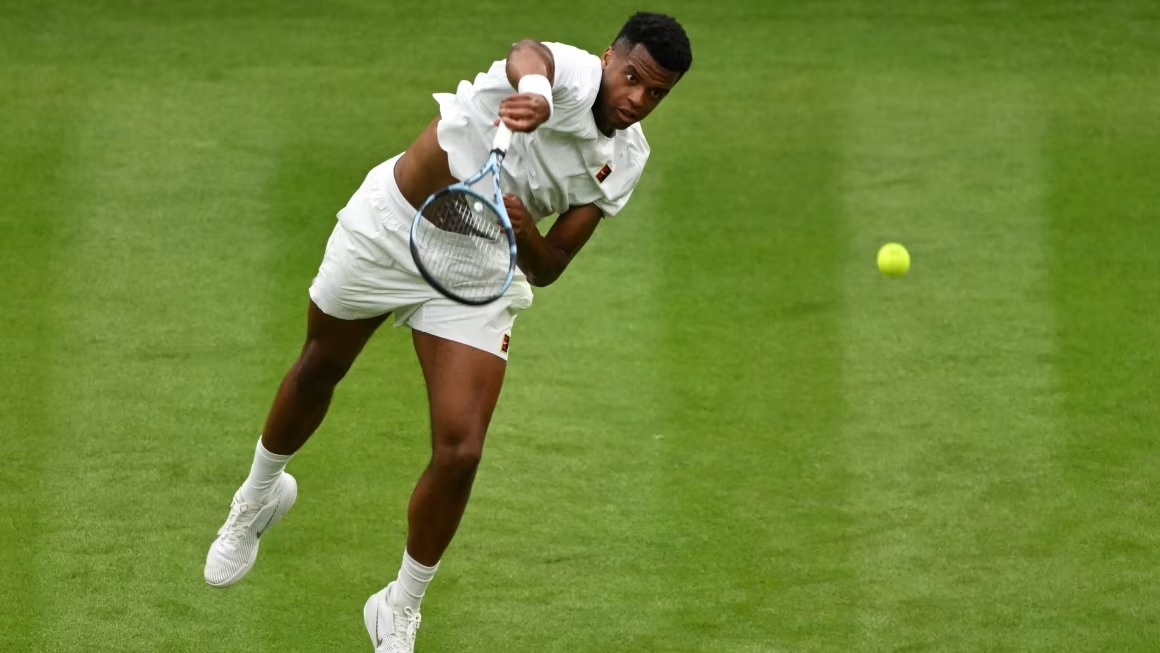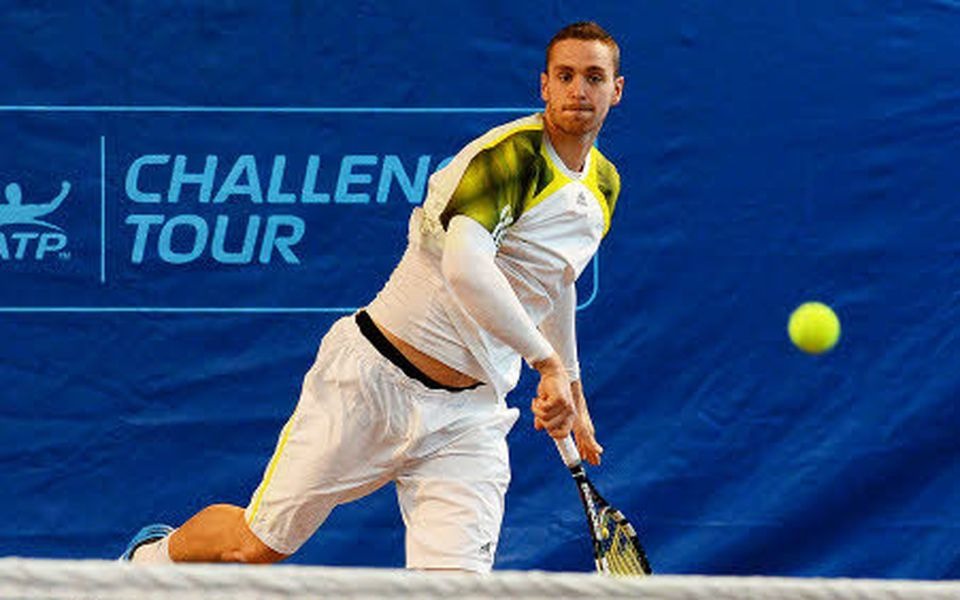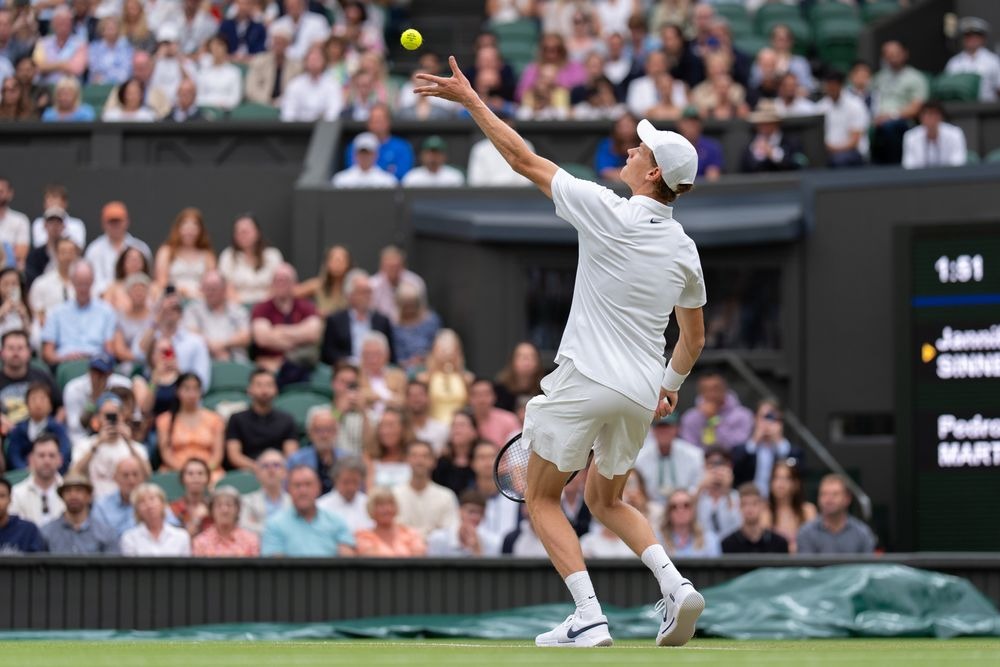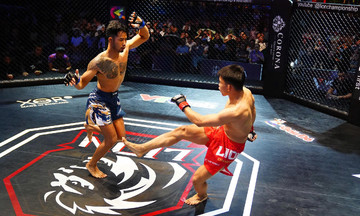 |
Mpetshi Perricard set a new Wimbledon serve speed record in the first round of the 2025 tournament. Photo: *Reuters* |
Anyone who has picked up a racket and attempted a serve understands its difficulty. It's not just about getting the ball over the net; it's about generating both speed and accuracy. The serve distinguishes professional players from amateurs and is a crucial weapon in contemporary tennis.
Today, men and women serve much faster than ever before, reaching speeds once thought impossible. At Wimbledon 2025, fans witnessed the fastest serve in the tournament's 148-year history: Giovanni Mpetshi Perricard's 246 km/h "rocket" against Taylor Fritz in the first round.
"You need synchronized movement from multiple body parts to create the best serve," says sports scientist Mark Kovacs. "The swing is a result of a chain of actions where you try to optimize each movement in each phase, meaning you use the energy of the whole body, summed up from the ground to impact the ball."
After years of studying the biomechanics of the tennis serve, Kovacs has identified eight factors that impact it: the open stance, the ball toss, the preparation, the coiling, the acceleration, the contact, the deceleration, and the finish – when the player lands back on the court.
Kovacs's work uses data and multiple studies to help athletes improve their serves by refining the details within this chain of movements. He has been assisted by several renowned powerful servers, including John Isner, whose 253 km/h serve in 2016 was recognized by the ATP as the fastest that year.
Of the eight phases of the serve, Kovacs highlights the most crucial for a quality delivery. The third phase, preparation, is when the player sets their body position before hitting the ball. The key here is the posterior hip rotation. Next, from the fifth to seventh steps – acceleration, contact, and deceleration – the arm speed throughout this sequence determines the serve's velocity.
"Many coaches talk about players having a 'whippy arm', meaning they serve powerfully but with less-than-perfect technique," Kovacs explains. "They may not be technically proficient in all steps, but they know how to get their arm in the right position and execute the movement at the right time. Just getting that phase right can lead to a very good serve."
Besides technique, height influences the serve. Most top players today are taller than average, a trend seen in other sports like basketball.
"Force equals mass times acceleration. Force here is serve speed," Kovacs explains why height makes a difference. "Mass is body weight, and generally, the taller the player, the heavier they are. Acceleration is leverage, meaning the length of arms and legs. You generate more acceleration because you have more time to complete the motion."
Albano Olivetti, a French player who reached the second round of men's doubles at Wimbledon, agrees. Standing at 2.03m, Olivetti recorded a 257.5 km/h serve at a Challenger event in 2012, although it's unofficial as the ATP doesn't recognize records from outside its main tour.
 |
Olivetti set an unofficial serve speed record at a Challenger event in 2012. Photo: *CNN* |
"Being over 1.98m allows a player to hit down on the ball at contact when serving," Kovacs adds. "If you're shorter, you're actually hitting slightly up, which most people don’t realize, not down. That slight difference makes a huge difference in speed."
However, both Kovacs and Olivetti believe height isn't as advantageous as many think. Always taller than most opponents, Olivetti emphasizes technique over pure physique. He honed his serving skills from a young age.
Olivetti also believes the right racket is crucial for a powerful serve but can hinder other shots. The 33-year-old cites his previous racket, which, with his preferred string tension, gave him more serving power but made returning serves from the baseline difficult.
"It's not easy to find the balance," Olivetti says. "I held my serve, but I couldn't win on the return. Every player is different, you have to find the right balance for your game, and I think the racket plays a very important role in that."
Olivetti predicts serve speeds will increase as players explore new ways to use and refine this key weapon. Many believe current players haven't reached the limit of human serving potential. He believes Jannik Sinner, for example, could add an average of 16 km/h to his serve.
 |
Jannik Sinner serves in the second round of Wimbledon 2025. Photo: *Reuters* |
"Of course there's a limit, assuming everything else stays the same, from technology, balls, strings, rackets, to temperature and environment," Kovacs adds. "Part of the reason for so many powerful serves at this year’s Wimbledon was the hotter, drier weather in the early days; the ball travels faster through the air. Under these conditions, ball speed can increase by 5-8 km/h compared to normal conditions."
The current official fastest serve recorded by the ATP is 263.4 km/h, set by Sam Groth in 2012. With the increasing impact of the serve on match outcomes, this record may be broken in the next decade.
Vy Anh












